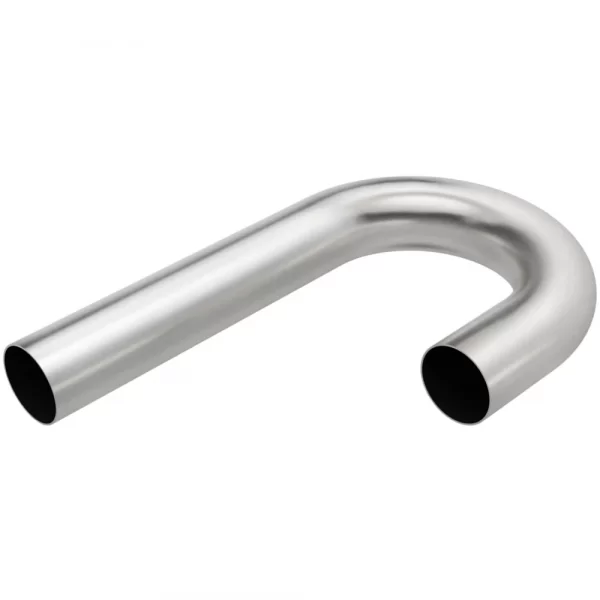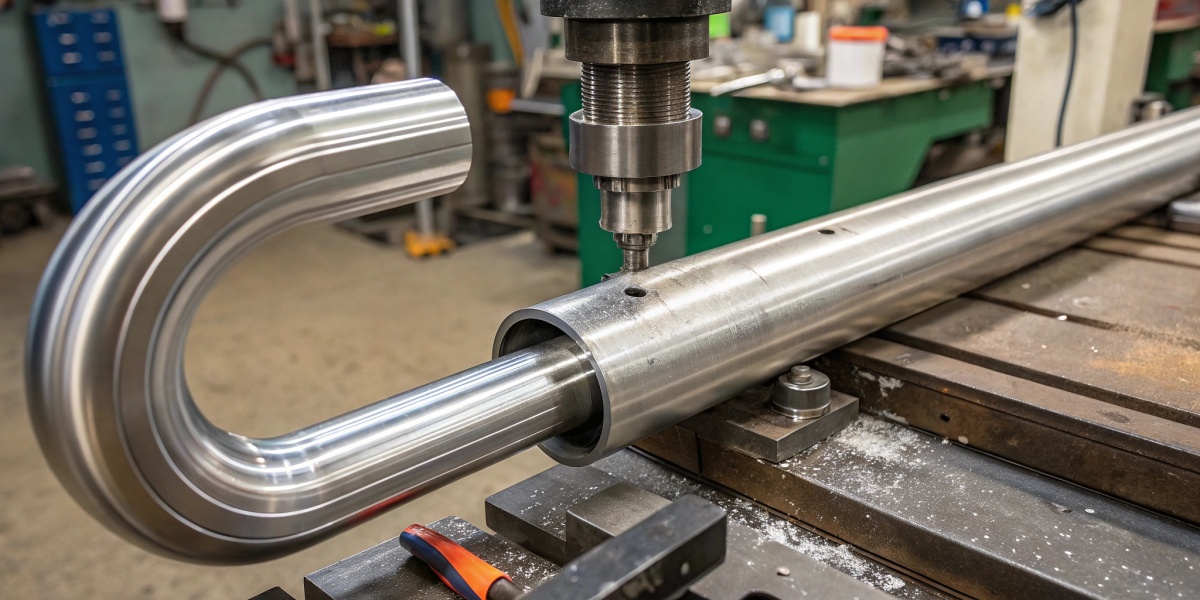Address
304 North Cardinal
St. Dorchester Center, MA 02124
Work Hours
Monday to Friday: 7AM - 7PM
Weekend: 10AM - 5PM
Address
304 North Cardinal
St. Dorchester Center, MA 02124
Work Hours
Monday to Friday: 7AM - 7PM
Weekend: 10AM - 5PM

Unlock the secrets to successfully bending aluminum with this in-depth guide. Discover proven methods for achieving precise bends, while ensuring a safe working environment. Learn how to leverage the inherent benefits of aluminum, including its exceptional strength-to-weight ratio, resistance to corrosion, and eco-friendly recyclability. Gain expert knowledge on selecting the optimal aluminum alloy to match your project’s unique demands. Whether you’re crafting architectural marvels or functional components, this resource provides invaluable guidance for achieving professional results with aluminum bending.

Ever tried bending aluminum and ended up with a mess? Let’s talk about how to avoid that!
Bending aluminum involves using different methods like press braking, roll forming, and rotary draw bending to shape aluminum without breaking it. The right method depends on the aluminum alloy, bend radius, and desired shape. As someone who’s worked with aluminum for years, I can tell you choosing the right approach is key.
So, you’re curious about the best ways to bend aluminum, right? Keep reading, because I’m going to share some insights that’ll save you time and frustration.
Wondering how the pros bend aluminum? It’s not as hard as you might think.
Common methods for bending aluminum include press braking, which uses a machine to press the aluminum into a V-shape, roll forming, which gradually bends the aluminum as it passes through a series of rollers, and rotary draw bending, which uses a rotating die to bend the aluminum around a fixed point. I remember the first time I tried press braking; it took a few tries to get it right, but practice makes perfect!
When you’re deciding which method to use, think about a few things. Press braking is good for making bends quickly, but it might not be the best choice for complex shapes. Roll forming is great for making long, consistent bends, but it needs special equipment. Rotary draw bending is good for making accurate bends with small radii, but it can be slower.
| Method | Pros | Cons | Best For |
| Press Braking | Fast, versatile | May not be ideal for complex shapes | Simple bends, short production runs |
| Roll Forming | Consistent bends, efficient for long runs | Requires specialized equipment | Long, consistent shapes, high-volume production |
| Rotary Draw Bending | Accurate bends, good for small radii | Can be slower | Complex shapes, small radii |
Also, the type of aluminum you’re using matters. Some aluminum alloys are easier to bend than others. For example, 5052 aluminum is known for its good formability, while 6061 aluminum is stronger but requires more force to bend.
If you’re working with aluminum that’s difficult to bend, you might want to consider annealing it. Annealing is a heat treatment process that makes the aluminum softer and easier to work with. To anneal aluminum, you heat it to a specific temperature and then let it cool slowly. This process can significantly improve the aluminum’s formability, but it’s important to follow the correct procedure to avoid damaging the material. I once forgot to control the temperature properly during annealing, and the aluminum ended up too soft and unusable!
Safety first! Bending aluminum can be dangerous if you’re not careful.
When bending aluminum, always wear safety glasses to protect your eyes from flying debris. Use gloves to protect your hands from sharp edges, and make sure your work area is well-ventilated to avoid inhaling fumes from lubricants or coolants. I learned this the hard way when a piece of aluminum shot off and almost hit my eye!
Working with aluminum bending equipment can be risky. Always get proper training on how to use the machinery safely. Follow the manufacturer’s instructions and never try to modify the equipment.
Here’s a step-by-step guide to safe aluminum bending:
Wear safety gear: Always wear safety glasses and gloves.
Inspect the equipment: Make sure the machinery is in good working order.
Secure the material: Ensure the aluminum is properly clamped or secured to prevent it from slipping.
Use correct tools: Use the right tools for the job and maintain them properly.
Maintain focus: Stay focused on the task and avoid distractions.
Ventilate the area: Ensure good ventilation to avoid inhaling harmful fumes.
Also, be aware of the specific hazards associated with each bending method. Press braking can pinch fingers if you’re not careful. Roll forming can create pinch points where the rollers meet. Rotary draw bending can generate a lot of heat, so be careful not to touch the hot metal.
Proper lubrication is also important for safety. Lubricants can reduce friction and heat, which can prevent the aluminum from cracking or breaking. Use the correct lubricant for the specific aluminum alloy and bending method. I’ve seen projects ruined because the wrong lubricant was used, causing the aluminum to seize and break.
Here is a table that explains different Aluminum alloy series.
| Aluminum Alloy Series | Main Alloying Element | Common Applications |
| 1xxx | Pure Aluminum | Electrical conductors, chemical equipment |
| 2xxx | Copper | Aircraft structures, high-strength applications |
| 3xxx | Manganese | Cooking utensils, radiators |
| 4xxx | Silicon | Welding wire, automotive parts |
| 5xxx | Magnesium | Marine applications, welded structures |
| 6xxx | Magnesium and Silicon | Architectural applications, bicycle frames |
| 7xxx | Zinc | High-strength aircraft parts, sporting goods |
Why choose aluminum? It’s got a lot going for it!
Bending aluminum offers several advantages, including its lightweight, corrosion resistance, and good strength-to-weight ratio. Aluminum is also easy to recycle, making it an environmentally friendly choice. From my experience, customers love the combination of durability and sustainability that aluminum provides.
Aluminum’s unique properties make it a great choice for many applications. Its light weight helps reduce the overall weight of products, which can improve fuel efficiency in vehicles and reduce transportation costs. Its corrosion resistance means it can withstand harsh environments without rusting or degrading, making it suitable for outdoor applications.
Let’s break down the benefits:
Weight: Lighter than steel, reducing overall product weight.
Corrosion Resistance: Naturally resistant to rust, ideal for outdoor use.
Strength: Strong enough for many structural applications, especially when alloyed.
Recyclability: Highly recyclable, reducing environmental impact.
Also, aluminum can be easily formed into complex shapes, allowing for greater design flexibility. Whether you’re creating intricate architectural details or simple structural components, aluminum can be bent, shaped, and formed to meet your exact needs.
When you are looking to buy Aluminum products, there are more factors to think about. The chart below compares Aluminum to other metals in different important categories.
| Feature | Aluminum | Steel | Stainless Steel |
| Weight | Lightweight | Heavy | Heavy |
| Corrosion Resistance | Excellent | Poor (rusts easily) | Excellent |
| Strength | Moderate | High | High |
| Cost | Moderate | Low | High |
| Recyclability | Excellent | Good | Good |
Not all aluminum is the same. Picking the right alloy is crucial.
To choose the right aluminum alloy for bending, consider the alloy’s strength, formability, and corrosion resistance. Alloys like 6063 and 3003 are known for their good formability, while 6061 is stronger but requires more force to bend. I always advise my clients to carefully consider the specific requirements of their project before making a decision.
Different aluminum alloys have different properties that make them suitable for different applications. Alloys like 6063 and 3003 are known for their excellent formability, meaning they can be easily bent and shaped without cracking or breaking. These alloys are often used for applications where complex shapes are required. On the other hand, alloys like 6061 are stronger and more heat-treatable, but they require more force to bend. These alloys are often used for structural applications where strength is more important than formability.
Aluminum alloys are designated by a four-digit number, with the first digit indicating the main alloying element. For example, 1xxx alloys are pure aluminum, 2xxx alloys contain copper, 3xxx alloys contain manganese, and so on. The other digits indicate the specific composition of the alloy.
When choosing an aluminum alloy for bending, consider the following factors:
Strength: How strong does the bent part need to be?
Formability: How easily does the alloy bend without cracking?
Corrosion Resistance: Will the part be exposed to harsh environments?
Cost: How much does the alloy cost?
Weldability: If the parts need to be welded, how easy is the welding process?
If you are choosing the right Aluminum alloy, you should consider the bend radius and thickness of the aluminum. A smaller bend radius will require a more formable alloy. Thicker aluminum will require more force to bend.
Also think about whether you need to heat-treat the aluminum after bending. Some alloys can be heat-treated to increase their strength.
Working with aluminum for many years, I can confirm that the right aluminum alloy is important for your final products.
Bending aluminum doesn’t have to be a headache. With the right methods, safety measures, and alloy choices, you can achieve amazing results!